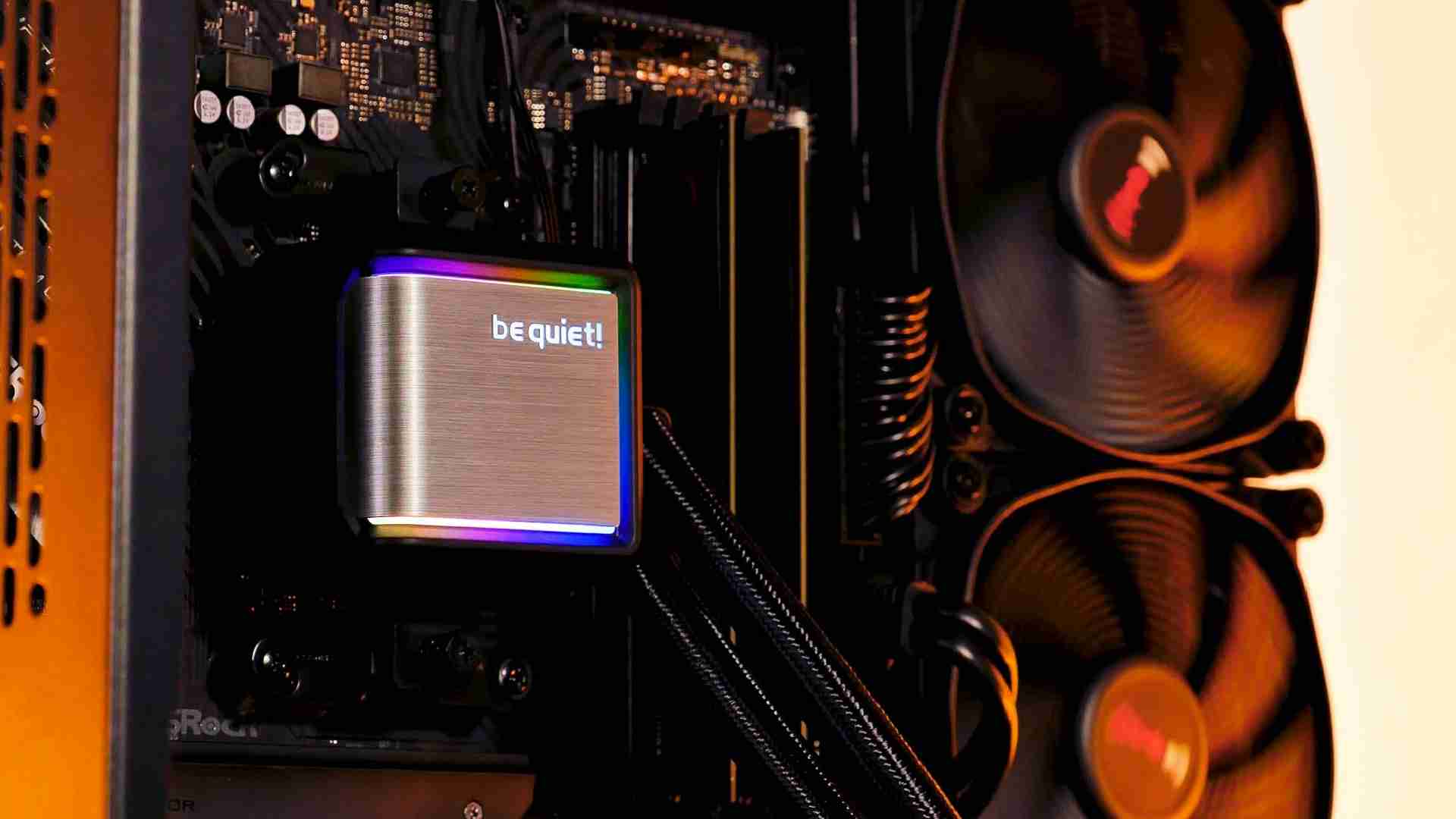be quiet! Light Wing 120 Review
Introduction
be quiet!s Light Wing 120 set of fans promises the usual be quiet! level of performance paired with some outstanding RGB light shows. And all of that should combine into a neat little package in form of 120mm Case Fans!
For this review, we will focus on the 120mm PWM Tripple Pack which be quiet! is offering. Please note that there also exists a Light Wing 120mm High-Speed pack which, despite the name suggesting differently, should be treated as two entirely separate lineups of fans.
Positive
- Excellent Performance
- Excellent Noise-to-Performance
- Excellent Build Quality
Neutral
- Included RGB Hub
Negative
- Should include a PWM Splitter
What's in the Box?

Except for the mandatory 3x Light Wing 120mm PWM High-Speed which the name is already suggesting, these multi-pack includes be quiet!'s first RGB hub.
But don't mistake the hub as an RGB controller, its sole purpose is to take an ARGB signal and spread it across multiple RGB devices.
For the rest of the box, we will also find the mandatory fan screws from every fan ever created.

Below we also included a summarized spec sheet:
| Name | be quiet! Light Wings 120mm PWM |
| Size | 120x120x25mm |
| Speed | 1700RPM |
| Airflow | 41.51 CFM |
| Static Pressure | 1.66mm/H2O |
| Noise |
20.6db |
| Connection | PWM |
| Bearing | Rifle |
| RGB | 3-Pin ARGB |
Installation

Installing a pack of Light Wings is significantly easier if you know how painful a Silent Wing's mounting system was. Instead of any choices, the Light Wing's frame is coming completely assembled (or more in a single piece) and you directly start positioning the fan and attaching the screws.

From there, we can hook up the Fan to a PWM header and the ARGB to an ARGB header. Luckily, the ARGB header on the Fan is including a splitter at the end, so that we are able to install all of our fans to a single ARGB header on the motherboard.
Appearance

As expected, the most important change between the newest Light Wings and every previous be quiet! fan is the RGB imlpementation.
But we shouldn't completely ignore the rest of the fan. Just like any other be quiet! fan we have seen before, the Light Wings feature the same grooves on the fan wings while sharing the same level of rigidness and excellent build quality that we came to expect.

That being said, the RGB implementation is as be quiet! as it gets. With a thin semi-transparent ring around the fan, be quiet! used 18 LED's to create a controllable light around the fan. Additionally to that, be quiet! made sure to include 4x even thinner cut-ins on the backside of the fan to make the light visible from the other side. This creates a fan that looks great from both sides.
All in all the RGB implementation for the Light Wings is incredibly well executed. There is not a single light visible to the naked eye and the transitions between the individual LED's is very clean and creates a stunning light show.
Benchmark
No matter if RGB or not, a fan still needs to perform.

While performing our usual Benchmark and letting the Light Wings spin at 100% Fan speed, they were able to keep the 3700x at 56°C.
Considering their 1500RPM and their Case-Fan use cases, this result was exactly what we expected.

Once the fan speed was reduced and the numbers normalized by noise, we were able to observe that the Case-focused regular Light Wings are not that far behind their High-Speed Counterparts. Although they are seemingly giving up (which was absolutely expected once you let the high-speed's spin above 1500RPM), the regular 1500RPM versions are actually pretty much on the same level as their static pressure-focused counterparts.
Up until the very end, slim to no change was observed. From there, the High-Speed 120mm Light Wings just kept going for a little further.
Conclusion

Considering that these 120mm Light Wings are supposed to be a "slower", "Case Airflow focused" version of the much better 120mm High-Speed counterparts, they do keep the fight going significantly longer than expected.

From a raw performance standpoint, it is undeniable that their 120mm High-Speed counterparts can go on a little bit further. But once you boil these results down to Noise-to-Performance and consider the fact that these regular 120mm Light Wings are supposed to be solely for Case-Fan usage, they do perform amazingly.

On the quality side, they are also exactly where they should be, at the level of a be quiet! Silent wing. From the sturdy wings and unbreakable frame to the decently implemented double-sided RGB ring. These Light Wings are a real treat to the eye.

Considering the outstanding design and quality, we can only recommend these regular 1500RPM quick Light Wings for any sort of Case Fan usage. For radiator usage, however, we would recommend to go for the quicker and static-pressure focused High-Speed version.


Inter-Tech RS-06 Review
Inter-Tech released a new set of Fans, the Argus RS-06 RGB Set! Let's have a deeper look at them and see if they are better (
Read More
Asiahorse FS 9002 Review
Asiahorse is one of few Amazon-exclusive companies offering well-perfoming fans at a highly competitive price. Lets take a cl
Read More
Noctua NH-U9S Review
The Noctua NH-U9S has to fill a very delicate spot. Sitting right in between big full-tower and small form factor CPU coolers
Read More
be quiet! Silent Loop 2 360mm Review
What happens if you combine be quiet!s excellent performing Silent Wings with a good performing pump and rad? A Silent Loop 2
Read More